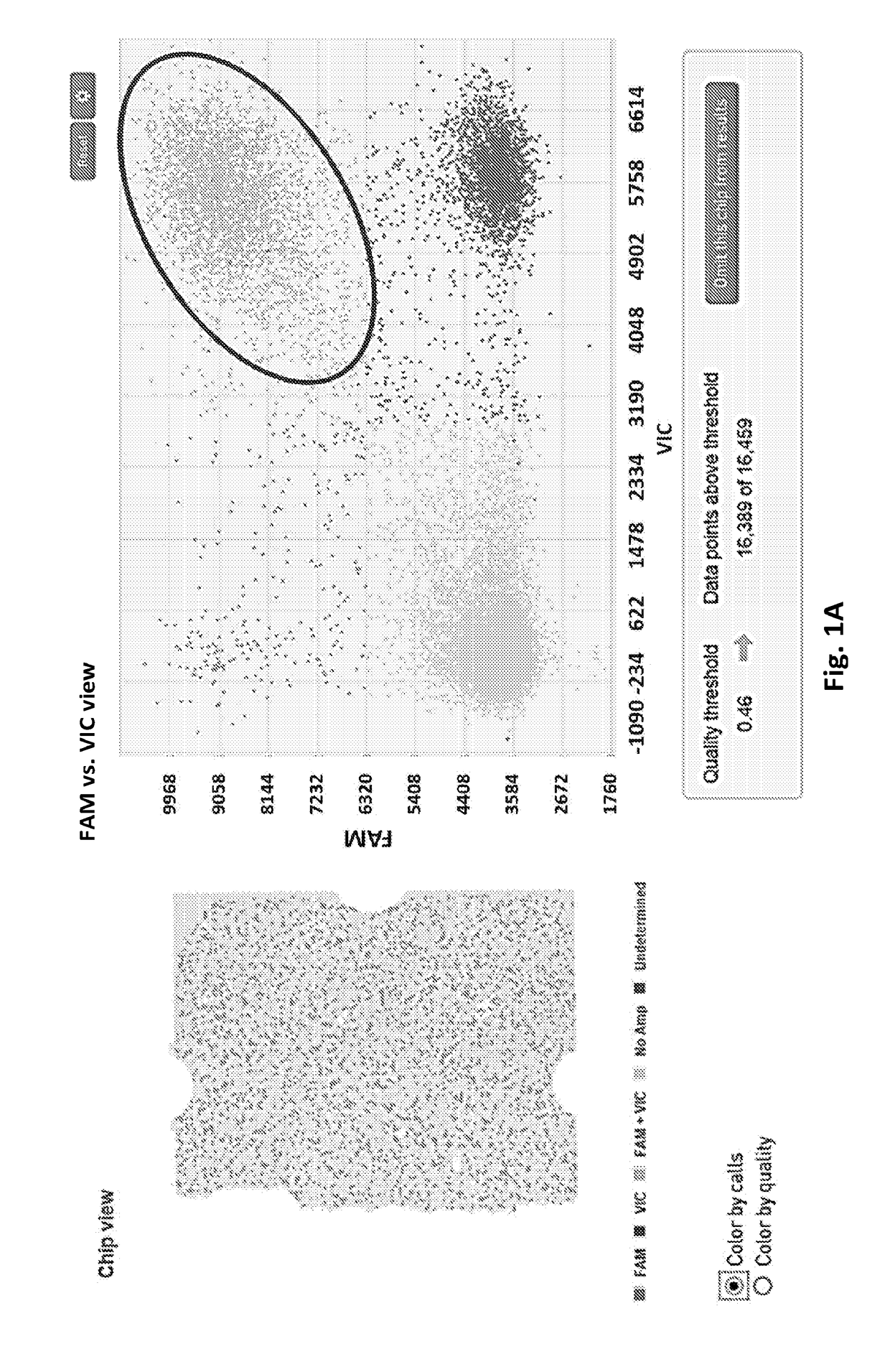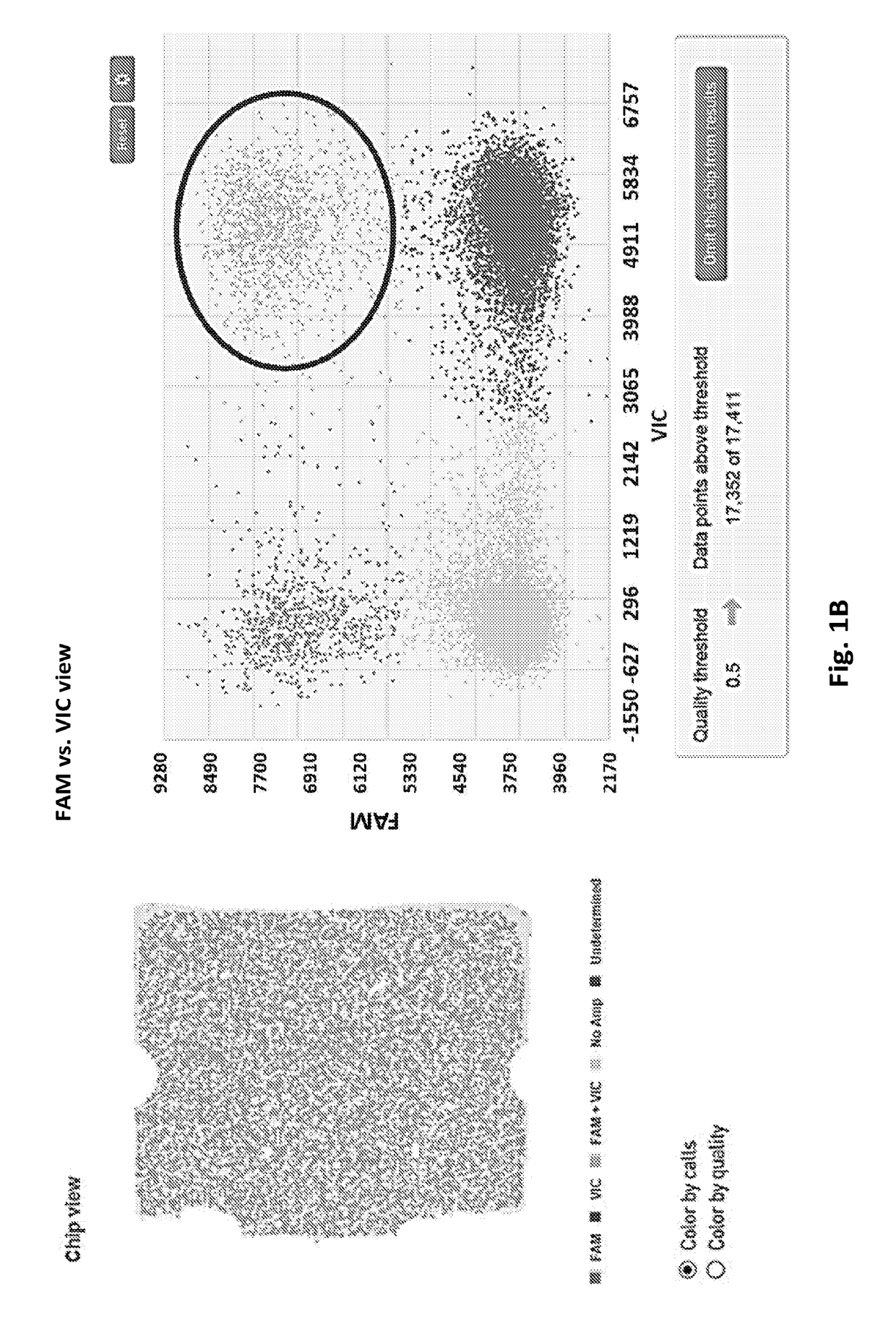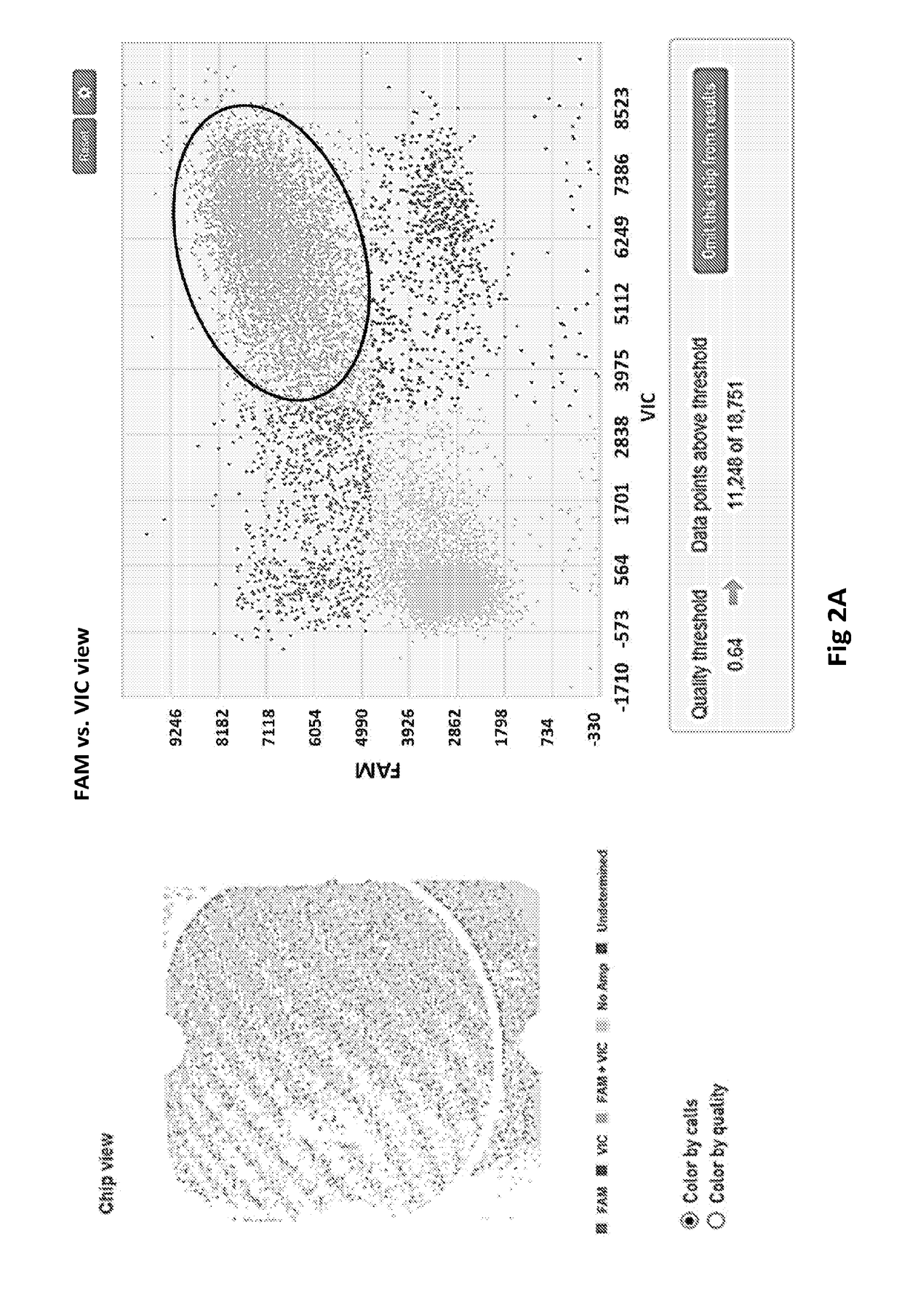Co-detection and association of multiple genes from the same genome in a sample
a technology of multiple genes and genomes, applied in the field of simultaneous detection (codetection) of multiple genes, can solve problems such as inability to detect methods, severe illness,
- Summary
- Abstract
- Description
- Claims
- Application Information
AI Technical Summary
Benefits of technology
Problems solved by technology
Method used
Image
Examples
example 1
Pilot Study for dPCR Detection and Association of Multiple Genes
[0036]We have developed various PCR-based detection methods for the identification, differentiation and quantification of different STEC strains. A major limitation of these PCR assays is that they are not able to associate two PCR-positive genes to a single genome. For example, a sample testing positive to both rfbE (coding for O157 antigen) and stx2 genes does not necessarily confirm whether the stx2 gene is actually carried by the E. coli O157 strain, as other strains in the sample can also carry the stx2 gene. An E. coli O157 strain that does not carry stx2 may not be as problematic. The current USDA protocol for identification of STEC O157 stains involves an E. coli O157 isolation process through traditional culture method that is tedious, low throughput, and may take up to a week to get the results. We have been investigating the possibility of using digital PCR to associate two or three genes to a single bacteria...
example 2
High Throughput dPCR Detection and Association of Multiple Genes
[0044]The protocol used in Example 1 was tested using a high throughput dPCR machine, the Fluidigm Biomark digital PCR platform that can do similar testing but with higher throughput capabilities. The Biomark 48.770 chip is capable of handling 48 samples, each has 770 cells (reactions). Fluidigm kindly provided a demo Biomark machine for this particular study.
[0045]We have demonstrated three lines of data with the Biomark system: 1) repeated what we have done with the QuantStudio 3D system which is to associate E. coli O157 antigen with stx2 gene using pure culture and cattle feces inoculated with culture; 2) In addition to serotype O157, we have also tested the six major non-O157 serogroups, namely O26, O45, O103, O111, O121 and O145, and associated them with one of the two stx genes (stx1 or stx2, we do not have an O45 strain that carries stx2 gene in our collection, thus an O45-stx1 strain is used) using pure culture...
PUM
| Property | Measurement | Unit |
|---|---|---|
| volumes | aaaaa | aaaaa |
| emission wavelength | aaaaa | aaaaa |
| emission wavelength | aaaaa | aaaaa |
Abstract
Description
Claims
Application Information
 Login to View More
Login to View More - R&D
- Intellectual Property
- Life Sciences
- Materials
- Tech Scout
- Unparalleled Data Quality
- Higher Quality Content
- 60% Fewer Hallucinations
Browse by: Latest US Patents, China's latest patents, Technical Efficacy Thesaurus, Application Domain, Technology Topic, Popular Technical Reports.
© 2025 PatSnap. All rights reserved.Legal|Privacy policy|Modern Slavery Act Transparency Statement|Sitemap|About US| Contact US: help@patsnap.com



